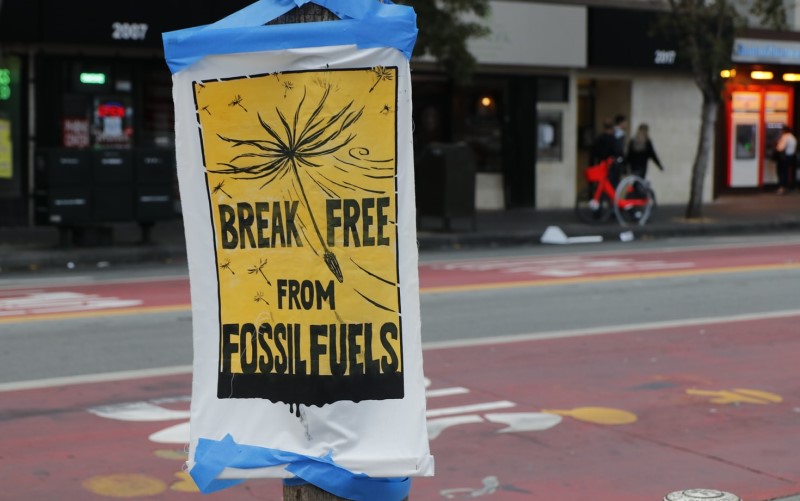Jobs and decarbonisation: how Australia should manage the transition
February 4, 2022
The move away from fossil fuels will be felt unevenly across Australia: the communities most exposed to these changes must lead our response.
In a 2003 article for The Economist, American-Canadian author and essayist William Gibson declared that the future is already here it’s just not evenly distributed. When we look at global decarbonisation, the future isnt here quite yet, but it is clearly coming and it wont be evenly distributed across the Australian economy.
In a new report, Whos buying? The impact of global decarbonisation on Australias regions, the Centre for Policy Development (CPD) modelled the locked-in and likely impacts of international decarbonisation commitments by Australias export partners on employment and output at a local government area (LGA) level.
Decarbonisation is a fact. Through their words and actions, Australias major trading partners that currently buy our coal, gas and oil have been explicitly clear that they will not be purchasing anything like current amounts of these commodities for much longer. How we respond to this fact will determine the distribution of the future across Australian regions and what type of future that is.
As things stand, more than 20 per cent of our export profile is made up of fossil fuels. With conservative models predicting that the global demand for coal will halve by 2050, and others suggesting an even sharper decline, change is coming, and fast.
The CPD report found that while the overall number of Australian export jobs under threat was modest, the impacts are strikingly uneven in their geographic distribution. Our analysis involved scenarios charting three different pathways to decarbonisation. The most conservative accounted for explicit pledges made by export partners prior to April 2021. Another took into account likely actions stemming from the ambitious goals and targets made in recent years, and the final scenario looked at export demand consistent with a global position of net zero carbon emissions by 2050.
Using an input-output model, we connected each of these scenarios to output and employment in Australia at the LGA level to model geographically specific impacts of these changes. We found, depending on which global decarbonisation scenario was modelled, that between 100,000 and 300,000 jobs connected to the fossil fuels export sector will be exposed over the next 30 years. Roughly half of these were in major cities where employees would likely be easily reabsorbed into diverse labour markets. The remainder were concentrated in regions heavily reliant on fossil fuel exports.
These numbers included flow-on effects to jobs in areas such as finance, maintenance and hospitality. The analysis did not consider domestic energy policy it was restricted to the industries that rely on the international export market.
At a national level, 300,000 jobs over 30 years is little more than background noise well below the ambient annual job creation and destruction in a labour market of nearly 15 million. However, seven of Australias more than 500 LGAs have more than 20 per cent of their workforce affected by declining export demand. These LGAs are clustered in central Queenslands Bowen Basin, the Upper Hunter in NSW and the Pilbara in Western Australia.
It is probable that the decarbonisation of the global economy will create more Australian jobs than it displaces, even in the resources sector. The popular imagination holds wind and solar farms as the natural replacement industries for fossil fuels, but this view is simplistic and limited.
Decarbonisation opens a much wider range of opportunities than this, touching the services, transport, logistics, manufacturing, infrastructure and resources sectors. It includes mining for battery inputs such as lithium, nickel and rare earth, as well as the production of green hydrogen and clean steel for export. There are already projects under way on the direct intercontinental export of renewable energy from land-rich areas in Australia to densely populated areas in Asia such as Singapore, and manufacturers that are heavily exposed to the price of electricity will be emboldened by the proliferation of lower-cost renewable power.
Changes in the global economy unconnected to decarbonisation, such as the digitisation of the services industry, will also create opportunities for Australian business generally and fossil fuel-reliant communities in particular over the coming decade. Just as the changes in demand for fossil fuels will have flow-on effects, so will the emergence of these industries.
The choices we make as a nation today to ready regional economies for a change in export demand will determine how well we can capitalise on these opportunities. It is simply not enough to say more jobs in than jobs out, problem solved. We must plan and act so that the specific people and communities most affected by decarbonisation are best equipped to lead the pack for emerging opportunities.
Our research proposes laser-focused local jobs deals between industry, government, investors, workers representatives and community leaders as a model to pursue this work. The people and communities exposed to the greatest change should determine the method and model of our response. Governments, industry, investors and civil society should support this at a state and national level. In this way we can be sure that the response is both locally supported and aligned with that communitys own picture of success.
There is clear appetite for this work at a local level, with recent polling showing a clear majority of people in both NSW (64 per cent) and Queensland (58 per cent) see decarbonisation as a job creator, while less than a quarter back fossil fuels as the best source of future jobs.
By formulating a clearer picture of how to pursue these opportunities, and what gaps must be bridged to do that, communities can more smoothly ride the predictable, manageable, long-term industrial transition that global decarbonisation entails.
For Australia, the future is very much now when it comes to responding to global decarbonisation. To make that future more fair, sustainable and prosperous, our response must be both national and local.

